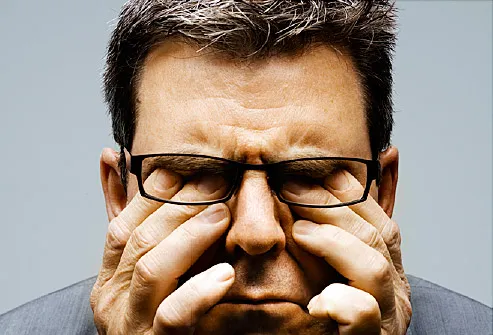Twitter data may help shed light on sleep disorders
Researchers from Boston Children’s Hospital and Merck have built the beginnings of “digital phenotype” of insomnia and other sleep disorders based on data from Twitter. This study, published today in the Journal of Medical Internet Research, is one of the first to look at relationships between social media use and sleep issues, and- based on assessments the sentiments expressed in users’ tweets - gives preliminary hints that patients with sleep disorders may be a greater risk of psychosocial issues.
The study - led by Jared Hawkins, PhD; David McIver, PhD; and John Brownstein, PhD, of Boston Children’s Informatics Program and researchers at Merck - is the product of a Boston Children’s/Merck collaboration on social media and sleep announced in 2014.
Insomnia and other sleep issues affect between 50 and 70 million Americans. Apart from their impact on productivity, accidents and risky behaviors, chronic sleep disorders also contribute to diabetes, cardiovascular disease and depression.
Historically, population-level research on sleep disorders has relied on survey methods such as the Behavior Risk Factor Surveillance System. However, such methods are time- and resource intensive, expensive, suffer from long lag times before reporting and are not generalizable to the larger U.S. population.
Research based on social media data may help overcome these limitations. To support such research, Hawkins, McIver, Brownstein and their colleagues sought to develop a “digital phenotype,” or baseline profile of what a person suffering insomnia or other sleep disorders “looks” like on social media.
“Sleep deprivation and chronic sleep disorders are not well understood,” said Brownstein, who directs the hospital’s Computational Epidemiology Group. “We wanted to see if we could use new forms of online data, such as Twitter, to characterize the sleep disordered individual and possibly uncover new, previously-undescribed populations of patients suffering sleep problems.”
 The research team used publically available anonymized data from Twitter to create a virtual cohort of 896 active Twitter users whose tweets contained sleep-related words (e.g., “can’t sleep,” “insomnia”), or hashtags (e.g., #cantsleep, #teamnosleep), or the names of common sleep aids or medications. They then compared data from that cohort to those of a second group of 934 users who did not tweet using sleep-related terms. The team examined each user’s:
The research team used publically available anonymized data from Twitter to create a virtual cohort of 896 active Twitter users whose tweets contained sleep-related words (e.g., “can’t sleep,” “insomnia”), or hashtags (e.g., #cantsleep, #teamnosleep), or the names of common sleep aids or medications. They then compared data from that cohort to those of a second group of 934 users who did not tweet using sleep-related terms. The team examined each user’s:
age
total number of tweets
total numbers of followers or people followed
number of favorite tweets (that is, the number of tweets by others that the user had favorite)
length of time on Twitter (that is, how long the user had had an active Twitter account)
average number of tweets per day
location
time zone
The researchers also assessed the time of day and average sentiment—positive, neutral, negative- of each user’s tweets.
The resulting profile of a Twitter user with sleep issues—compared to a Twitter user without - looked like this:
have been active on Twitter for a relatively long time
has fewer followers and follows fewer people
posts few tweets per day on average
more active on Twitter between 6:00 pm and 5:59 am
more active on Twitter on weekends and early weekdays
more likely to post tweets with negative sentiment
Taken together, the data suggest that Twitter users suffering from a sleep disorder are less active on Twitter on average but tweet more during traditional sleeping hours. The increase in negative sentiment in their tweets suggests that sleep-disordered users could be at an increased risk for psychosocial issues.
“These findings are preliminary and observational only, and need to be studied further,” Brownstein cautioned. “But they suggest that social media can be a useful addition to our toolkit for studying the patient experience and behavioral epidemiology of sleep disorders.”
###
The study was supported by the National Library of Medicine (grant number T15LM007092) and Merck.
About Boston Children’s Hospital
Boston Children’s Hospital is home to the world’s largest research enterprise based at a pediatric medical center, where its discoveries have benefited both children and adults since 1869. More than 1,100 scientists, including seven members of the National Academy of Sciences, 14 members of the Institute of Medicine and 14 members of the Howard Hughes Medical Institute comprise Boston Children’s research community. Founded as a 20-bed hospital for children, Boston Children’s today is a 395-bed comprehensive center for pediatric and adolescent health care. Boston Children’s is also the primary pediatric teaching affiliate of Harvard Medical School.
###
Keri Stedman
.(JavaScript must be enabled to view this email address)
617-919-3110
Boston Children’s Hospital